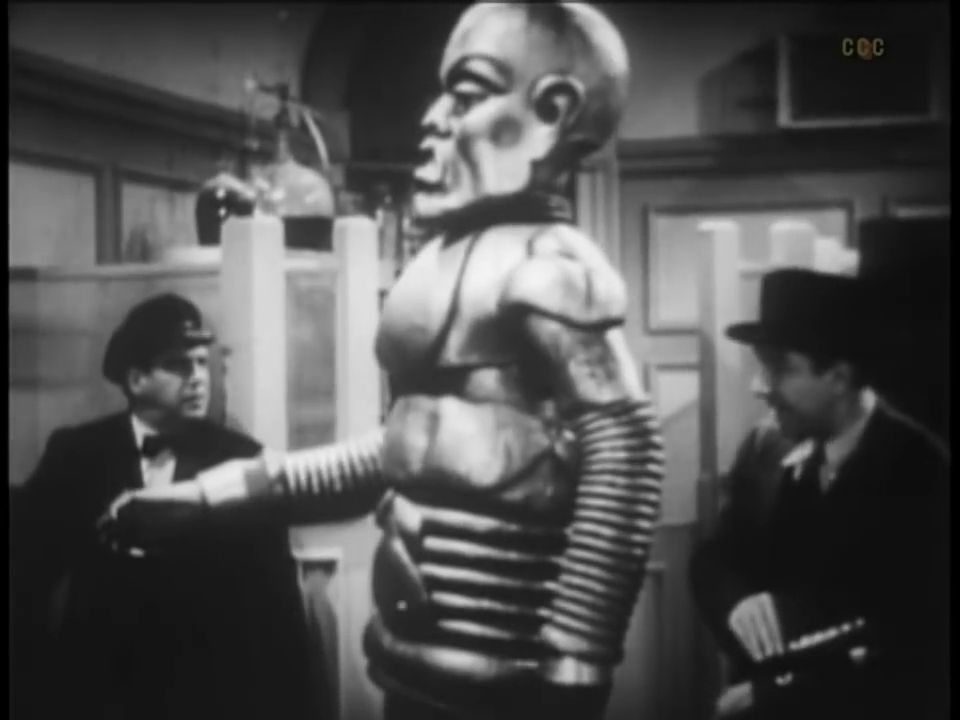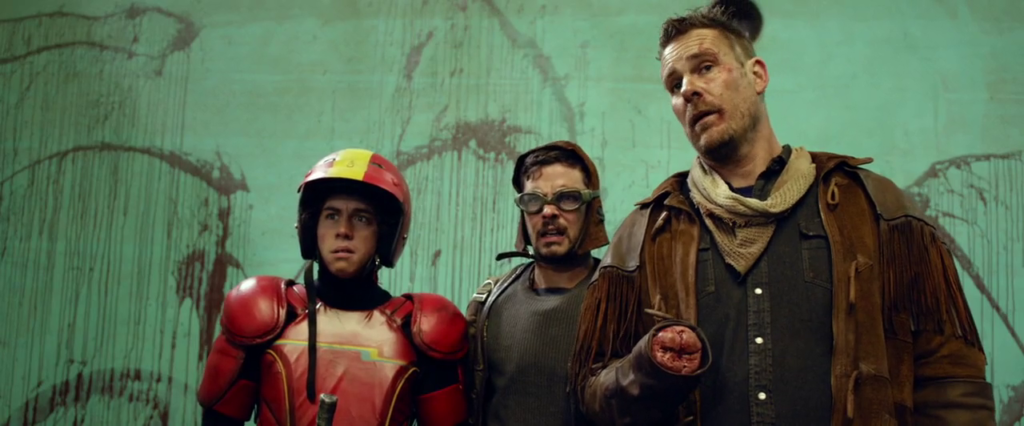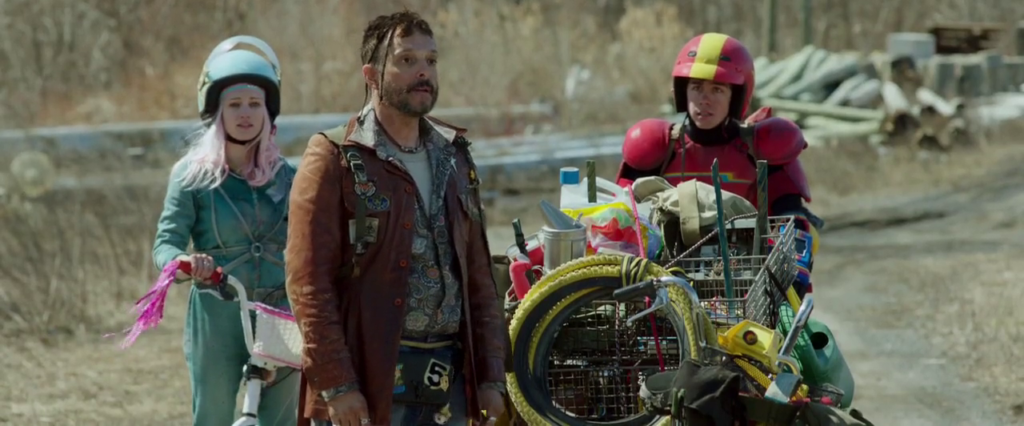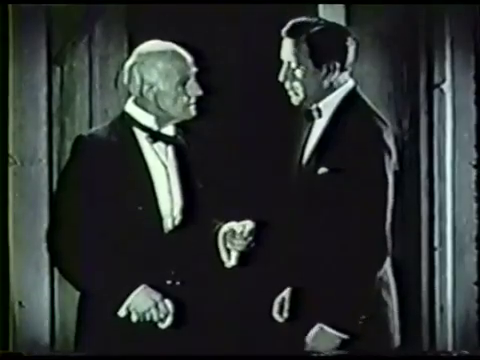-
#456 – The Phantom Creeps (1939)
The Phantom Creeps (1939)
Film review #456
Directors: Ford Beebe, Saul A. Goodkind
SYNOPSIS: An evil scientist named Dr. Zarko has developed inventions that he intends to use to take over the world. With the government and foreign spies constantly trying to get him to get a hold of his inventions, Zarko is uninterested until his wife his killed, when Zarko swears vengeance against the world. Faking his own death, he adopts a new disguise and sets to work. Bob West, a government agent, works together with Dr. Frank Mallory, Zarko’s once-assistant, and journalist Jean Drew to try to foil Zarko’s various attacks and the spies who want his work, while beginning to suspect Zarko is not dead after all…
THOUGHTS/ANALYSIS: The Phantom Creep is a 1939 film serial composed of twelve chapters. Most notable for featuring film icon Bela Lugosi as the villain, it would also be the last movie serial he would star in. The serial starts off introducing Lugosi’s character Dr. Alex Zarko, a brilliant scientist but a bit eccentric as he likes to play tricks on the government agents and foreign spies that are attempting to buy or steal his inventions. He takes everything in good stride until his wife is killed, and the thought of vengeance on the world completely consumes him, and begins using his inventions for evil after faking his own death. Government agent Bob West teams up with Dr. Frank Mallory, who was Zarko’s assistant who wanted him to donate his inventions to the government for the benefit of mankind, and left when he refused. Also working with Jean Drew, a journalist at a national newspaper. Together, they take on the spies that are attempting to get a hold of Zarko’s inventions, and investigate whether Zarko is really dead. One thing that stands out in this serial is all the various inventions that Zarko uses. He has invisibility, an eight-foot robot, robotic spiders that can paralyze people and also a device to put people into suspended animation. Normally, only one of these inventions would serve as the main plot point for a serial, but this serial gives us all of them. While all of these inventions have been the focus of other serials, having them all together like this gives some much needed variety, as different chapters focus on different things, and are used fairly creatively in the various schemes and set-ups. The plot has a lot of back-and-forth with the characters ending up at Zarko’s old home many times, only to be continually come under attack and being surprised when they do so. The story goes round in circles and lacks some direction with so many different things happening, but it’s better than nothing happening, which is what many serials do when they try to stretch very little over twelve to fifteen chapters.
In terms of characters, they are nothing special: there’s all the usual characters from the young action-hero, the sole female etc., but the star of the serial is obviously Bela Lugosi, who gets first billing, and is always the star of every film he is in. His performance is similar to his usual roles (he is the villain in a few serials), but he undoubtedly draws in the audience for those very roles. He also has an assistant called Monk, who plays the role of the idiotic assistant who bungles and sometimes intentionally sabotages Zorka’s plans provides some comedic value, but is mostly there to give Zorka someone to interact with and get his wrath out on.
With all of the inventions and devices that form the backbone of the action, the effects are fairly well pulled off. Of course, the mechanical spiders and the floating objects being carried by an invisible Zorka aren’t convincing nowadays, but there’s definitely worse I’ve seen in the serials of this time. One thing of interest is that there’s not many fistfights or gun shoot-outs, which is usually what most of the action in serials consist of. This serial has all of the inventions to replace that, but also focuses a little more on setting up large scale explosions or vehicle crashes that form the chapter’s cliffhangers. The chapters are also fairly longer than usual, going to about twenty minutes whereas some serials only have fifteen minute chapters with a lot of reused footage from a previous chapter. As such, I think you would get your value for money going to watch this at the theatre in comparison to others. Overall, The Phantom Creeps has a fair amount to offer viewers with its imaginative inventions, and Lugosi’s star quality. The story lacks direction sometimes and the other characters fall flat due to some dull acting and lack of anything unique about them, but overall the serial has enough to make it an above average venture.
-
#455 – Turbo Kid (2015)
Turbo Kid (2015)
Film review #455
Directors: François Simard, Yoann-Karl Whissell, Anouk Whissell
SYNOPSIS: In the post-apocalyptic world of 1997, a boy known only as Kid, who idolises the “Turbo Rider” comic book character, stumbles upon a girl named Apple, who starts following him around everywhere. When the local warlord Zeus starts pressing his terror across the wasteland, Kid discovers the remains of the real Turbo Rider, and along with them, the superhero powers he needs to take on Zeus himself…
THOUGHTS/ANALYSIS: Turbo Kid is a 2015 post-apocalypse sci-fi film, it is an expanded version of the six-minute short film T is for Turbo from 2006. The film is very much an 80’s retro-styled post-apocalypse film that were produced in overwhelming numbers throughout the decade (mostly inspired by the success of Mad Max). The film starts off introducing Kid, a teenage boy who lives in this wasteland by scavenging, and who idolises the comic book character “Turbo Rider.” One day he stumbles upon a bizarre young woman named Apple, who starts following him around everywhere. The pair get caught up in a fight with the local warlord Zeus. The story of the film is fairly straightforward and easy to follow, and while the stakes never seem to be too high, the focus is on the characters and their relations to each other, rather than saving the world. It definitely has that Mad Max feel in terms of the story, with minimal worldbuilding or lore into how everything was destroyed and how people survive in this world, which is more or less in keeping with the genre, which usually gives off an “end of history” vibe in that after the world is destroyed, the question of “why?” doesn’t have much meaning, particularly in comparison to the question of survival.
Kid stumbles upon the remains of the real “Turbo Rider,” and takes his superhero suit and laser blaster thing to become him, and this gives him the power to take on the villains. This also feels very much like another classic 80’s trope: the revenge flick, in which a wimpy teenage kid suddenly gets the power to take revenge on everyone that wronged them. The obscure film Laserblast (though released in 1978) is one that particularly stands out to me. This is also a very sudden realisation that Turbo Rider isn’t just a comic book character, but is apparently a real person in this universe, which is not hinted at all before this reveal. Perhaps it is a sign that a destroyed world has no need to remember superheroes. When Kid puts on the suit, he takes up the mantle of the superhero in this strange new world, and as his connection to other characters and his past is revealed. The cast of characters on the whole have their own personalities and roles, and while none of their characters are particularly noteworthy or unique, you get a sense of the entirety of their character, given that in a post-apocalyptic world, most people don’t have multi-layered personalities and interests, and instead rely on their base instincts to survive.
The 80’s aesthetic extends to the soundtrack, which is very synth-driven, and while the budget is fairly low for the film, the cheaper CGI also feels more suitable to its aesthetic. The majority of the film relies on practical effects, particularly in relation to the use of gore; and there is a lot of gore. This is also very much in keeping with the exploitation and revenge films of the time where those who have wronged our hero often end up being disembowelled or mutilated in some way. There’s a nice contrast between the colourful superhero element of the film and the excessive gore that again reflects an age of cinema when age ratings were all over the place. The practical effects of the gore lead to some pretty fun and absurd situations, particularly when the body parts land on someone’s head and a totem pole of severed torsos start piling up. It’s this sort of thing that makes the film quite creative. Turbo Kid is overall quite minimal in it’s story and world setting, but excels in some ridiculous and over-the-top special effects that create some visceral gore which equally nasty and funny. While there are many films that set themselves up as a love letter to the 80’s, Turbo Kid also follows that trend while not feeling like its not afraid to push itself further, and allowing itself not to be constrained by the usual tropes associated with it. The low budget I think hampers the ability to do something more grand and spectacular with the whole superhero element, but it’s a fairly decent film that has you connecting to the characters and immersing you in familiar tropes that are comfortable and recognisable, but still able to throw in a few surprises.
-
#454 – Radar Patrol vs Spy King (1949)
Radar Patrol vs Spy King (1949)
Film review #454
Director: Fred C. Brannon
SYNOPSIS: A new radar defense system is being constructed that will cover the entire United States, but it’s completion is being interrupted by a series of attacks led by neo-nazi spy John Baroda and his henchman. Chris Calvert, agent for the Radar Defense Bureau, is assigned to supervise the completion of the radar with the help of Joan Hughes, who is in charge of the project. Together with Mexican agent Lt Manuel Agura, they work to complete the radar station while stopping The Spy King Baroda and his henchman from preparing a foreign invasion…
THOUGHTS/ANALYSIS: Radar Patrol vs Spy King is a 1949 serial comprised of twelve chapters. The serial opens up with the usual display of explosions signifying attacks that are disrupting the completion of a new radar system across the United States. The attacks are being led by “The Spy King” John Baroda, alongside his assistant Nitra and their henchman, who intends to disrupt the radar system in aid of a foreign power. Radar defense bureau operative Chris Calvert is assigned to the project, being developed by Joan Hughes, and they work together with Mexican agent Lt Manuel Agura to bring down the Spy King. The plot follows a very typical serial format, with each chapter usually beginning with the heroes or villains explaining what is going to happen in the current chapter, and then…you watch it happen. There’s never any real surprises, and the set-ups and chase scenes have all been done before. There’s a fair amount of explosions and action that form the basis of the cliff-hangers, but they are resolved in a nonchalant way as usual.
Heading up the heroes is Chris Calvert, the typical male lead with no distinguishing features whatsoever. Joan Hughes as the typical sole female character, although she does have a job other than secretary or reporter, and she only gets kidnapped once, both of which are rare for women in these serials. The villain is rather uninteresting, and the character of a Neo-Nazi spy is a trope that was used during the war and a while after for villains, as the fear of “the enemy within” and saboteurs that live among us was a theme that was quite powerful, and continued for many years after. I recognise some of the actors as being in other serials, which is a sign that I have watched way too many of these, and also that a lot of them are completely interchangeable in different serials; the actors that play the henchman always play them, and a lot of the female characters are played by the few female actors of the time.
As mentioned, the action scenes and explosions are decently done, and give the serial a bit of excitement, but there’s very little in terms of the plot or characters which sets itself apart from any other serial. The cliffhangers are sometimes a bit more inventive, but that’s all that stands out. Given that this serial came out past the peak of the format’s popularity, there is not much original that could have been done. The acting shows it’s weakness in the dialogue that awkwardly explains the plot rather than showing it, but for the rest of the time it’s passable. Overall, Radar Patrol vs Spy King is nothing special, and falls into the large pile of forgettable serials. It doesn’t have any huge problems, but avoids anything too disastrous in its production to make it any less than average.
-
#453 – Black Oxen (1923)
Black Oxen (1923)
Film review #453
Director: Frank Lloyd
SYNOPSIS: In New York high society, the appearance of a young woman named Mary Ogden who is the spitting image of a woman who has not been seen for thirty years after she left to marry in Austria. Her appearance causes a stir with the older members of high society, as they wonder how this woman can look exactly the same as a woman from thirty years ago. Lee Clavering, a member of the society, starts to take notice of her, which draws the scorn of Janet Oglethorpe, who desires Lee for herself. However, Mary has a dark secret that may drive Lee away forever…
THOUGHTS/ANALYSIS: Black Oxen is a 1923 silent film based on the book of the same name by Gertrude Atherton. The film is set in New York’s high society, where the most prominent members of society mingle in the theatres and the like. One night they notice a new lady, Madame Zittany, who is the exact image of Mary Ogden, who left to marry a count in Austria some thirty years ago. Her appearance causes quite a stir, with some believing her to be an illegitimate child of Mary’s. Lee Clavering, a member of this high society, starts to spend time with her and falls in love with her. The film is very much a romance film, but the mystery of Countess Zittlany provides an interesting twist to a typical story. It is very rare to see romance films blend with a more bizarre mystery, so it definitely stands out. The plot moves along at an even pace, probably helped by being based on a book. The themes of romance and high society contrasting with the more wild and free youth provides a good support to the mystery of the Countess, who is seen differently between the different generations.
The characters are well-defined and are recognisable by playing specific roles. Lee as the lead is described as being a “secret romantic” inside his disinterested exterior, leading to the women trying to get him to open up. He’s not particularly animated or interesting, but serves as a blank slate for male viewers to project themselves into I suppose. The women are by far the most interesting characters: The mysterious Countess has her mystery, but not much of a personality trait that is recognisable. Jane Oglethorpe is the elderly matriarch of the society, and represent some very traditional values, while Janet Oglethorpe, her granddaughter, represents the youth culture of partying and independence. The young people are referred to as “Flappers,” which isn’t a word you would hear nowadays, but probably still represents a similar divide between generations, which is pretty interesting to see in a film that is nearly a hundred years old. I think Janet particularly steals the show, as her chaotic actions really disrupt the norms of high society and add an element of unpredictability to a society that is mired in tradition and expectations. One particular moment when she refers to her grandmother and her associates as “tombstones” was genuinely funny, as you don’t really expect such an upfront performance in this era.
The science-fiction element of this film is part of the mystery of the Countess, who it turns out is actually Mary Ogden herself, rejuvenated through x-ray experiments and glandular surgery. It isn’t explained anymore than through images of a letter written to Lee confessing all of this to him, but this is a romance film rather than a sci-fi one. As mentioned, the film is based off a book of the same name that was both controversial and very popular. Maybe the idea of a woman altering her looks to look younger than she is was seen as deceptive, or maybe the “flappers” and their disregard for societal norms was frowned upon. Either way it does seem to be something that would have upset certain members of society. Mary’s reasons for undergoing this de-aging treatment aren’t personal, but rather to pretend to be her own daughter (when she in fact had none) to ensure the stability of Austria, as she married a Count there when she disappeared from New York thirty years ago. In pretending to be the descendent of herself and the Count would provide a sense of stability for the country. It’s a long-winded reason, but I think it’s meant to emphasise that she did not do this to simply look younger and re-live her youth, or steal eligible men, which is what her contemporaries seem to think.
The ending of the film is not available, but apparently it ends with Lee eventually marrying Janet instead of Mary, which the film doesn’t really set up from what I have seen. I don’t think the story is meant to “punish” Mary for her deception, but rather validate Janet’s free-spirited approach to life. Maybe that’s why the film is controversial in that it “rewards” Janet’s attacks on tradition with the hero (as far as marriage is the reward anyway). It’s obviously an old-fashioned film with it’s ideals firmly rooted in it’s time, but it’s also not scared to attack those traditions which is quite relatable today, and it shows that the gap between generations is pretty universal. Overall, Black Oxen is a decent silent film, with good acting, set designs, and a tight story that is clear despite it being silent. The performances are particularly strong and convey the specific personalities of all the characters very well. The sci-fi aspect raises some moral and ethical dilemmas, and it’s consequences are explored with enough detail to set the film apart from it’s contemporaries and make it quite memorable.








































